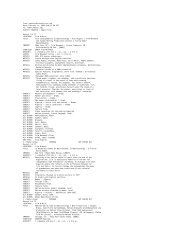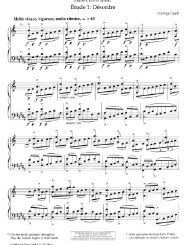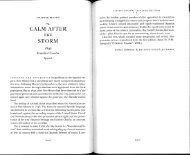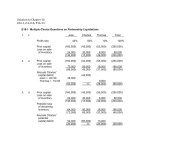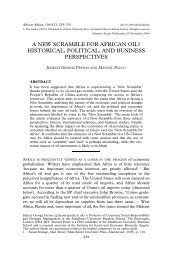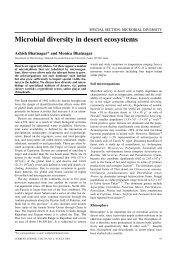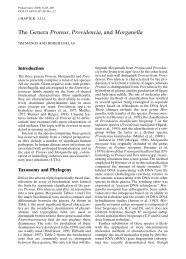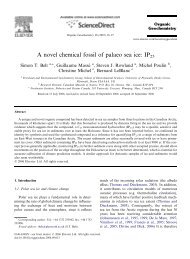Analysis by Key: Another Look at Modulation
Analysis by Key: Another Look at Modulation
Analysis by Key: Another Look at Modulation
You also want an ePaper? Increase the reach of your titles
YUMPU automatically turns print PDFs into web optimized ePapers that Google loves.
CARL SCHACHTER<br />
implicit in every moment of the piece'.3<br />
Obviously the tonic triad as m<strong>at</strong>rix is a chord elabor<strong>at</strong>ely prolonged or<br />
composed out (auskomponiert); this applies to the main tonic of a piece (for<br />
Schenker the only true tonic) as well as for most temporary 'tonics' produced <strong>by</strong><br />
modul<strong>at</strong>ion. Every tonic conceived as a m<strong>at</strong>rix is a prolonged chord, but not<br />
every prolonged chord is a tonic. The D minor and G major triads of Ex. 3 are<br />
not. Although D and G govern their prolonged harmonies, they have no special<br />
rel<strong>at</strong>ion to the non-harmonic notes of the melodic lines, nor does either form the<br />
point of origin or expected goal of a self-contained tonal progression. D and G<br />
are centres of a sort, for they are harmonic roots or fundamentals, but they are<br />
centres in a much more limited sense than tonic notes, for they exercise no<br />
control over scalar functions, over the syntactic properties of subordin<strong>at</strong>e<br />
chords, over form or design. Their governance is looser and far less elabor<strong>at</strong>ely<br />
hierarchical. In Schenker's terminology, the pitches of Ex. 3 are subject to the<br />
control of a C major di<strong>at</strong>ony. Thus although f2 in b. 2 and bl in b. 3 are consonant<br />
with the roots of their chords, they project a dissonant character with respect to<br />
the C major triad; and they eventually resolve into the third and root of th<strong>at</strong><br />
chord.<br />
Ex. 3<br />
.LL_L z<br />
a lf#! ,, ..<br />
C D G C<br />
(C: I II V I )<br />
A Change of Centre within a Prolonged Tnad<br />
The tonal centre of a passage may change during the prolong<strong>at</strong>ion of a single<br />
harmony - a realignment, as it were, in the magnetic fields of the notes th<strong>at</strong> form<br />
the musical <strong>at</strong>oms of the passage. Example 4 contains foreground and<br />
middleground reductions of the Presto section from the E minor Prelude of<br />
WTC I. Tovey characterizes this passage as 'first asserting the key of A minor<br />
(bars 23-26) . . .; and thence proceeding for twelve steps . . ., till E minor is reestablished<br />
in bar 32. After this it quickly proceeds to a dominant pedal . . .'4<br />
Now it seems self-evident to me th<strong>at</strong> the E minor triad of b.32, though<br />
containing the same pitches as the Prelude's tonic chord, does not function in a<br />
deep sense as a tonic - as a significant beginning or goal of motion. Instead it is<br />
a detail of motion, clearly on the way to the A minor sixth <strong>at</strong> the head of the next<br />
bar, which continues the prolong<strong>at</strong>ion of IV begun in b.23. The governing<br />
harmony of bs 23-33 is A minor (IV); within the prolonged IV, the E minor of<br />
b.32 fulfils a contrapuntal function: it provides consonant support for the<br />
292 MUSIC ANALYSIS 6: 3, 1987



